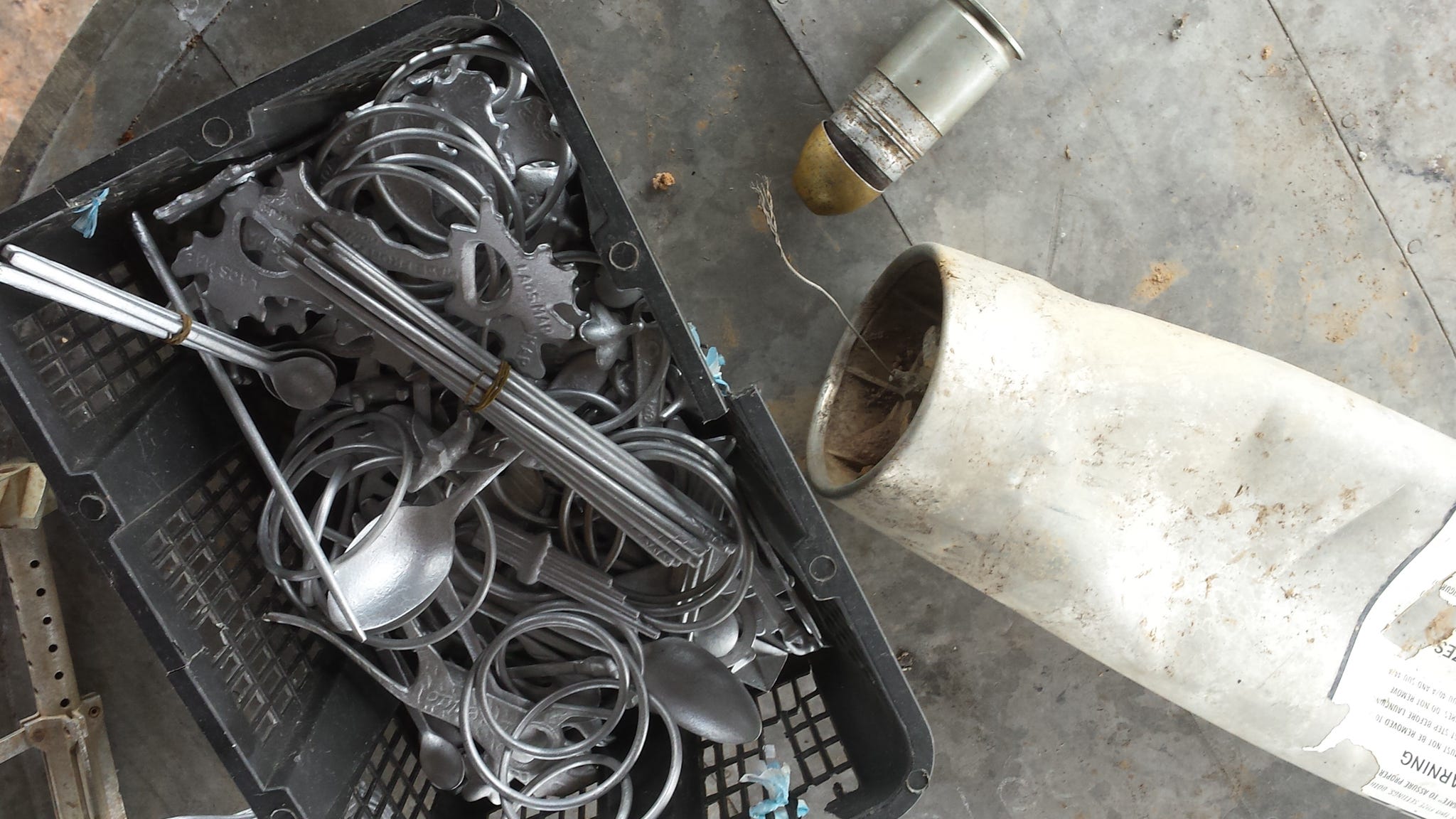The Village That Turns Bombs Into Spoons
Four decades after American planes littered Laos with explosives, locals are still uncovering bombs that didn’t detonate—often with grave consequences. But one entrepreneurial enclave has turned the dangerous devices into their greatest resource.

Photos by John Dennehy
The first time I rented a motorcycle and drove toward Ban Napia I heard loud booms of thunder. It was mid morning with clear skies. I pulled over and looked around. In the distance, green mountains rose up, and in the valleys between them was a second row of peaks, then a third, each one a sort of hazy inverse of the one before. Closer to the road, where the land was flatter, though still sloped, were terraced rice paddies and scattered houses. It was the dry season and most of the fields were fallow, but near the spot where I stood, a diverted stream kept one area green. I saw a handful of workers in the field. With each gentle gust of wind, I could hear the rice stalks bending and pushing against each other and competing with the sound of a dozen tiny waterfalls as one terrace flooded onto the next.
Another boom. This one sounded closer, but none of the workers looked up.
Keep reading with a 7-day free trial
Subscribe to Narratively to keep reading this post and get 7 days of free access to the full post archives.



